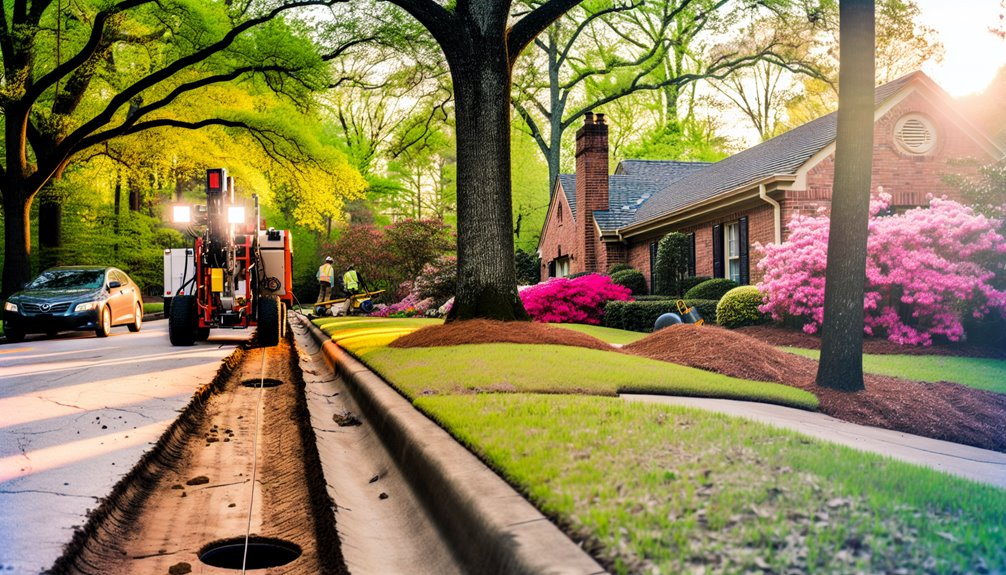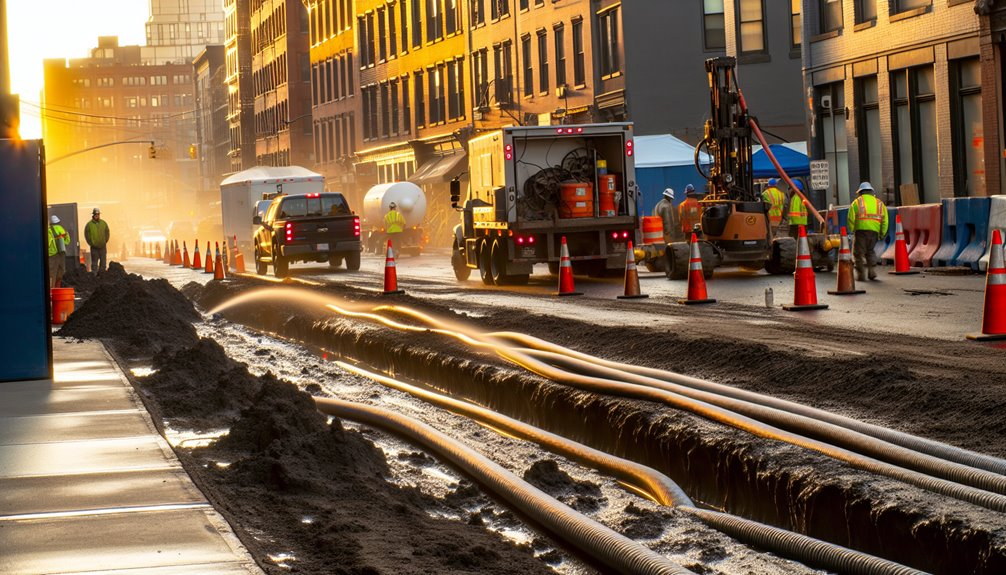If you need to run new water, sewer, gas, or fiber lines, directional boring lets you install them under your lawn, driveway, or patio without open trenches. Crews guide a pilot bore, ream to size, and pull pipe back from small pits—protecting turf, pavers, roots, drainage, and foundations. It’s faster, safer, and often cheaper than excavation, and it aligns with Atlanta permitting and utility locates. Here’s how it works—and when it’s the right choice for your property.
What Is Directional Boring and How It Works
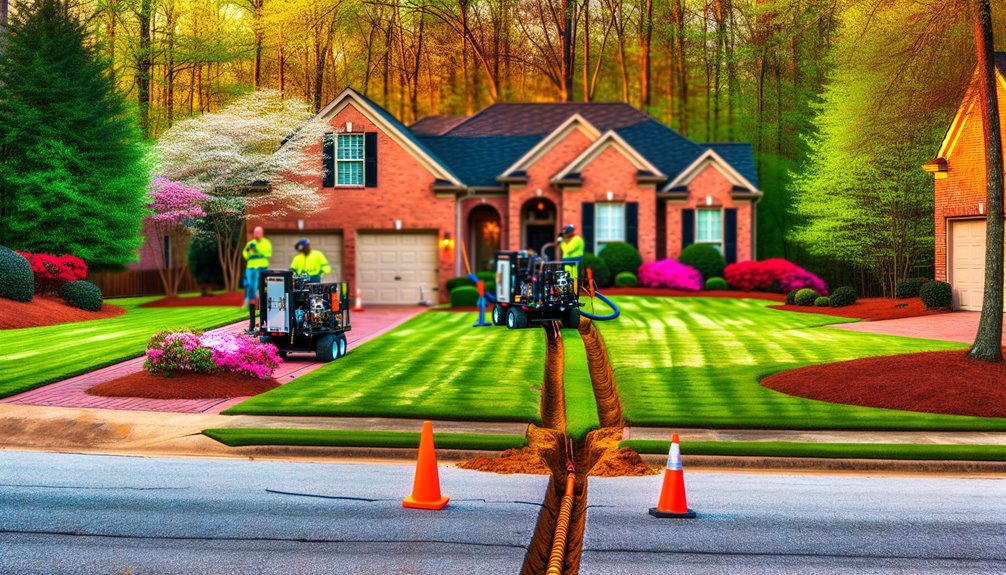
Although it’s often called trenchless drilling, directional boring (horizontal directional drilling, HDD) is a guided, steerable method for installing underground utilities with minimal surface disturbance.
You start with a small entry pit and a pilot bore. A locator and transmitter provide real-time underground steering, so the drill head follows a planned bore path and maintains proper depth, separation from existing utilities, and bend radii per code. After the pilot, you enlarge the hole with reamers, then pull back conduit or pipe with a swivel to prevent torque transfer.
You’ll verify utility locates, set exclusion zones, and manage drilling fluid to stabilize the bore, transport cuttings, and protect groundwater.
This trenchless installation respects utility easements, adheres to ASTM and OSHA practices, and keeps everyone on the same page.
Key Benefits for Atlanta Yards, Driveways, and Hardscapes
With a guided pilot bore and controlled reaming in place, you can see why HDD delivers clear advantages for Atlanta’s yards, driveways, and hardscapes. You gain minimal disruption because crews launch and exit from small pits, not open trenches. Your concrete, pavers, and turf stay intact, lowering restoration costs and timelines.
Technicians map utilities, call 811, and follow ASTM/OSHA best practices to avoid conflicts and maintain safe clearances. Tracking systems hold grade and alignment, protecting existing drainage and foundations. Fluid management controls returns and keeps the bore clean.
You’ll also benefit from root preservation. Crews profile tree protection zones, steer around critical roots, and adjust depth to safeguard canopy health. With code-compliant burial depths and proper backfill compaction, your surfaces remain stable, curb appeal holds, and property value stays strong.
Common Home Projects Perfect for Directional Boring
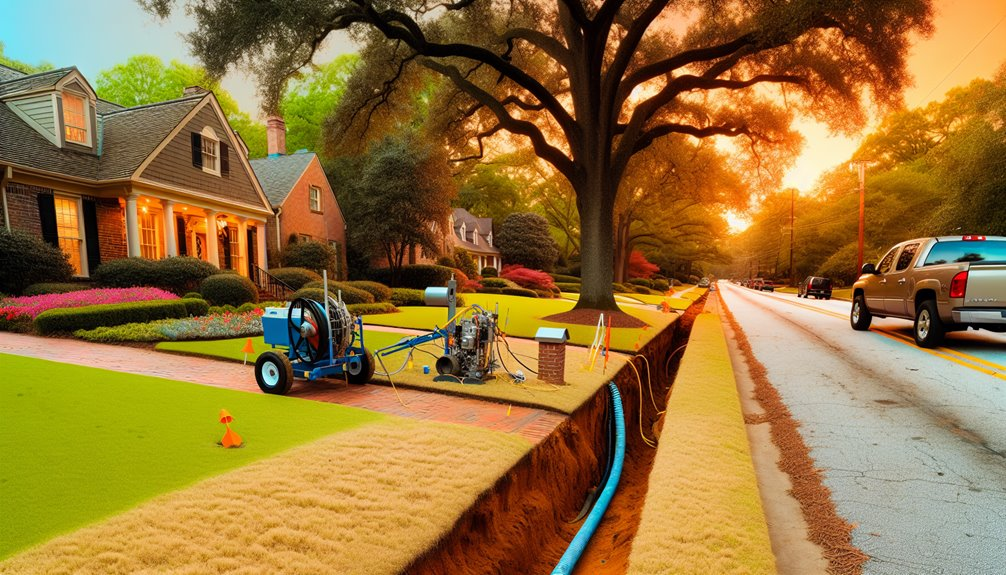
Think beyond trenches and you’ll spot several residential upgrades tailor‑made for HDD: new water service lines, sewer laterals, and sump discharge pipes; gas and electric conduit runs; fiber and low‑voltage sleeves; irrigation mains; and downspout or French drain tie‑ins. You’ll protect turf, trees, and hardscape while meeting code for depth, separation, and bedding.
For a sump pump discharge, HDD keeps the outlet pitched correctly, daylighted, and away from foundations. Replacing galvanized water service? Bore a continuous SDR‑rated line, pressure‑test, and disinfect before tie‑in.
Need irrigation upgrades? Install a main with tracer wire and isolation valves without slicing your lawn. Pull Schedule‑rated electrical or gas conduit with warning tape and mandated clearances.
Always call 811, verify utility locates, and document as‑builts for your records.
Cost, Timeline, and Permitting Considerations in Atlanta
Before you mobilize a drill rig in Atlanta, budget and schedule around three buckets: private work scope, public right‑of‑way impacts, and permitting.
Your budget estimates hinge on bore length, soil conditions, utility conflicts, and restoration needs. Typical residential shots run a few thousand dollars; rock, tight easements, or traffic control add cost.
Build a permits timeline early. Call 811, obtain City of Atlanta right‑of‑way permits if you cross sidewalks or streets, and secure county utility approvals when applicable.
Many approvals take 10–20 business days; add time for drawings, traffic plans, and inspections.
Plan duration from survey to restoration at 3–6 weeks: design/locates (1–2 weeks), permits (2–3 weeks), drilling/day-of work (1–2 days), and inspections/patch-back (3–7 days).
Document as-builts for code compliance and future maintenance.
Choosing a Qualified Directional Boring Contractor
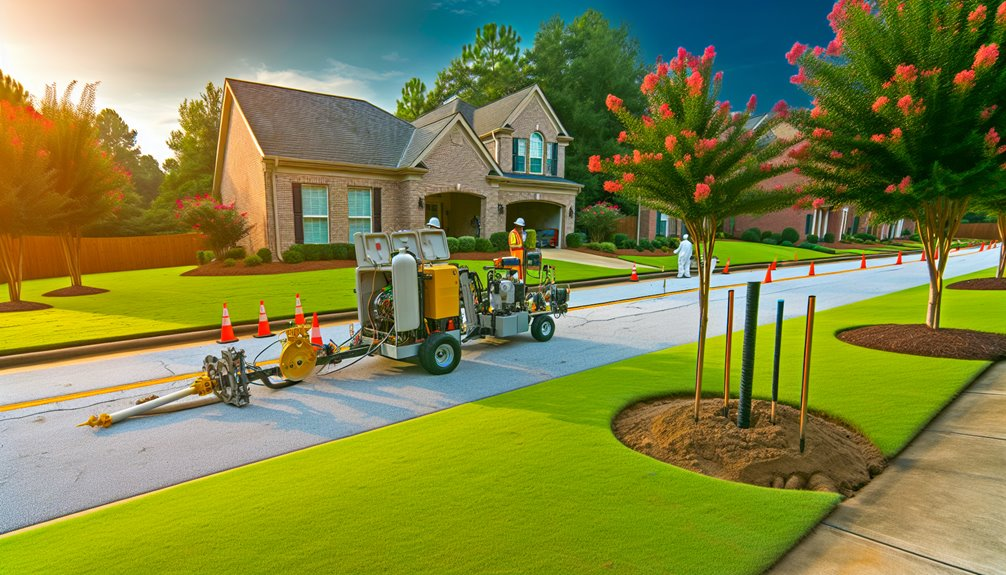
Permits and schedules only work if the crew can execute to spec, so choose a contractor who proves competency—not just availability. Verify Licensed Credentials in Georgia, current insurance (general liability and workers’ comp), and OSHA training. Ask for recent bore logs, as-builts, and utility coordination records. You want a team that potholes utilities, uses calibrated locating equipment, and documents depth, pitch, and separation per code.
Request a site-specific work plan: traffic control, spoil management, frac-out containment, and restoration standards for turf, hardscape, and irrigation. Compare equipment capability to your soil conditions and bore length. Review Customer Reviews that mention on-time locates, clean pullbacks, and cleanups. Require written warranties and a single point of contact. Finally, confirm they handle permits and 811 coordination end-to-end.
Conclusion
As the owner of Boring Bros., I’ve seen firsthand how directional boring preserves lawns, driveways, and curb appeal while keeping projects on schedule and on budget. If you’re in Atlanta and want a clean, efficient utility upgrade done right, visit boringbro.com to learn more or give us a call at (954) 639-6167 — we’d be happy to answer your questions and help plan your job.

